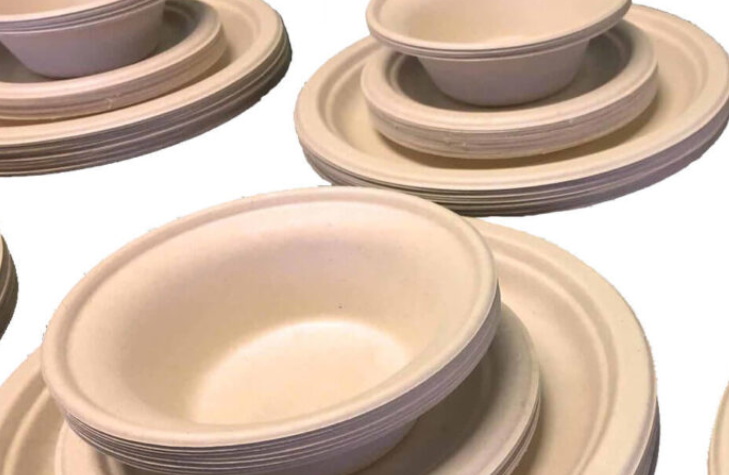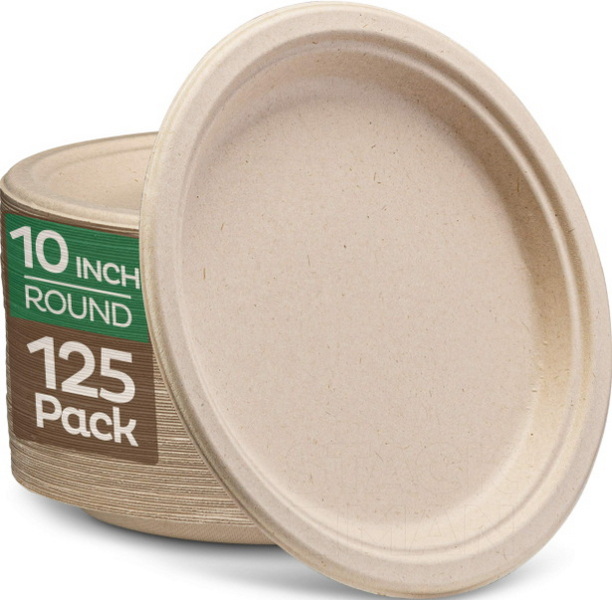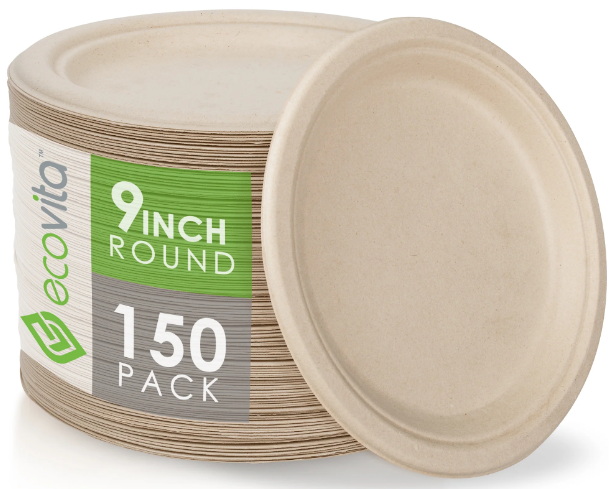
Content Menu
● Introduction to Paper and Plastic Plates
>> Paper Plate Disposable: Environmental Impact
>> Plastic Plate Disposable: Environmental Impact
● Comparison of Paper and Plastic Plates
● Sustainable Alternatives
● Market Trends and Consumer Preferences
>> Consumer Awareness and Regulatory Impact
● Innovations in Disposable Tableware
● Challenges and Opportunities
● Conclusion
● FAQs
>> 1. Are Paper Plates Truly Eco-Friendly?
>> 2. How Do Plastic Plates Impact the Environment?
>> 3. What Are Sustainable Alternatives to Disposable Plates?
>> 4. Can Paper Plates Be Recycled?
>> 5. How Can Individuals Reduce Their Environmental Impact from Disposable Tableware?
● Citations:
In the ongoing debate about the environmental impact of disposable tableware, paper plates and plastic plates are two of the most commonly used options. While both have their advantages and disadvantages, understanding their eco-friendliness is crucial for making informed choices. This article will delve into the environmental implications of paper and plastic plates, comparing their production processes, recyclability, and overall sustainability.

Introduction to Paper and Plastic Plates
Paper plates are made from wood pulp, a renewable resource, and are generally biodegradable. However, their production involves energy-intensive processes like pulping and bleaching, which can contribute to deforestation and chemical pollution. Plastic plates, on the other hand, are derived from non-renewable petrochemicals and take centuries to decompose, posing significant environmental risks.
Paper Plate Disposable: Environmental Impact
Paper plates are often seen as a more eco-friendly option due to their biodegradability and potential for composting. However, several factors complicate their environmental profile:
1. Production Process: The manufacturing of paper plates requires significant energy and water, contributing to greenhouse gas emissions and unsustainable forestry practices.
2. Recyclability and Composting: While paper plates can be composted, many end up in landfills due to contamination from food waste and plastic coatings.
3. Deforestation: The demand for paper products contributes to deforestation, impacting biodiversity and carbon sequestration.
Plastic Plate Disposable: Environmental Impact
Plastic plates are made from non-renewable resources and have a much longer decomposition time compared to paper plates:
1. Non-Renewable Resources: Plastic production relies on petrochemicals, which are finite and require extensive drilling and refining processes.
2. Long-Term Pollution: Plastic plates can take centuries to degrade, leading to long-term pollution and harm to wildlife.
3. Recycling Challenges: Plastic recycling faces significant challenges due to the variety of plastics and inadequate infrastructure.
Environmental Impact and Sustainable Choices Explained
Comparison of Paper and Plastic Plates
| Feature | Paper Plates | Plastic Plates |
| Material Source | Renewable (wood pulp) | Non-Renewable (petrochemicals) |
| Biodegradability | Biodegradable, can be composted | Non-biodegradable, takes centuries to decompose |
| Recyclability | Can be recycled but often ends up in landfills due to contamination | Can be recycled but faces challenges due to plastic types and infrastructure |
| Environmental Impact | Contributes to deforestation, energy-intensive production | Long-term pollution, harm to wildlife, and reliance on non-renewable resources |
| Cost | Generally more expensive than plastic plates | Initially cheaper but has higher long-term environmental costs |
Sustainable Alternatives
For those seeking more eco-friendly options, several alternatives are available:
1. Reusable Tableware: Porcelain or glass dishes are highly sustainable as they can be used multiple times, reducing waste significantly.
2. Biodegradable Materials: Plates made from bamboo or wheat straw are compostable and reduce environmental harm.
3. Palm Plates: These are crafted from naturally fallen palm leaves and offer superior compostability compared to paper plates[3].

Market Trends and Consumer Preferences
The market for eco-friendly paper plates is growing rapidly due to consumer demand for sustainable products. Paper plates made from renewable resources like bamboo and sugarcane bagasse are becoming increasingly popular[4]. However, despite their eco-friendly nature, paper plates often come with a higher cost compared to plastic plates[1].
Consumer Awareness and Regulatory Impact
Consumer awareness about environmental issues is driving demand for sustainable products. Governments are also implementing regulations to encourage the use of eco-friendly materials, further boosting the market for sustainable paper plates[4]. This shift towards sustainability is not only beneficial for the environment but also enhances the brand image of businesses adopting eco-friendly practices[1].
Innovations in Disposable Tableware
Innovations in disposable tableware are focusing on sustainability and functionality:
1. Bamboo Plates: Bamboo disposable plates are gaining popularity as a sustainable alternative to both paper and plastic plates. They offer both functionality and environmental responsibility[2].
2. Compostable Plates: Made from materials like sugarcane or bamboo, these plates are fully biodegradable in industrial compost systems, making them ideal for eco-conscious events[5].
3. Advanced Plastic Materials: While plastic plates are less eco-friendly, innovations in materials like Tritan and Polycarbonate offer durability and recyclability, addressing some environmental concerns[2].
Challenges and Opportunities
Despite the advantages of eco-friendly paper plates, challenges remain:
1. Higher Production Costs: Eco-friendly paper plates are generally more expensive than plastic plates, which can be a barrier for some consumers[1].
2. Limited Availability: In some regions, access to eco-friendly paper plates may be limited, affecting their widespread adoption[4].
However, these challenges also present opportunities for growth through innovation, expansion into emerging markets, and collaborations to increase availability and reduce costs[4].
Conclusion
While paper plates are generally considered more eco-friendly than plastic plates due to their biodegradability and potential for composting, their production and disposal can still have significant environmental impacts. Plastic plates, on the other hand, pose long-term environmental risks due to their non-biodegradable nature and reliance on non-renewable resources. Ultimately, the most sustainable option is reusable tableware, which minimizes waste and reduces environmental harm.

FAQs
1. Are Paper Plates Truly Eco-Friendly?
Paper plates are biodegradable and can be composted, making them more eco-friendly than plastic plates. However, their production contributes to deforestation and energy consumption, complicating their environmental profile.
2. How Do Plastic Plates Impact the Environment?
Plastic plates are made from non-renewable resources and take centuries to decompose, leading to long-term pollution and harm to wildlife. They also contribute to overflowing landfills and litter in natural environments.
3. What Are Sustainable Alternatives to Disposable Plates?
Reusable tableware, such as porcelain or glass dishes, is the most sustainable option. Biodegradable materials like bamboo or wheat straw plates are also eco-friendly alternatives.
4. Can Paper Plates Be Recycled?
While paper plates can be recycled, many end up in landfills due to contamination from food waste and plastic coatings. Proper composting is a more effective way to manage paper plate waste.
5. How Can Individuals Reduce Their Environmental Impact from Disposable Tableware?
Individuals can significantly reduce their environmental impact by switching to reusable tableware for daily use and opting for biodegradable or compostable options when disposables are necessary.
Citations:
[1] https://ambican.com/blog/comparing-materials-which-paper-plates-are-most-sustainable/
[2] https://reads.alibaba.com/smart-choices-in-disposable-dinnerware-amp-tableware-what-to-know/
[3] https://www.verterra.com/blogs/thedirtydish/paper-plates-versus-palm-plates-a-fight-for-sustainability
[4] https://markwideresearch.com/eco-friendly-paper-plates-market/
[5] https://droppe.com/blog/article/how-to-choose-the-best-material-for-disposable-plates-paper-plastic-or-compostable/
[6] https://plantplates.com/blogs/news/best-sustainable-food-packaging-products
[7] https://smartyhadaparty.com/blogs/home/paper-plates-vs-washing-dishes
[8] https://www.consumer.org.hk/en/advocacy/consultation-papers/202109016
[9] https://www.globenewswire.com/news-release/2024/10/29/2970595/28124/en/Biodegradable-Disposable-Tableware-Market-Research-2024-2030-with-Analyst-Recommendations-Expand-Product-Range-and-Customization-Options-Promote-Circular-Economy-Practices.html
[10] https://www.peelware.com/post/peelable-dinnerplates-vs-wasteful-paper-plastic-plates
[11] https://www.epd.gov.hk/epd/sites/default/files/epd/english/environmentinhk/waste/pub_consult/files/tableware-con-doc-en.pdf
[12] https://finance.yahoo.com/news/disposable-plates-market-expand-3-010000851.html
[13] https://jollychef.com/blogs/news/the-future-of-disposable-tableware-sustainability-innovation-design-trends-for-2025
[14] https://www.chamber.org.hk/en/information/the-bulletin_detail.aspx?id=799
[15] https://www.facebook.com/groups/2069392650054328/posts/3925985174395057/
[16] https://www.bambuhome.com/blogs/bambuliving/compostable-vs-disposable-plates
[17] https://www.info.gov.hk/gia/general/202310/18/P2023101800622.htm
[18] https://www.scmp.com/news/hong-kong/health-environment/article/3145243/ban-all-plastic-cutlery-2025-green-groups-urge
[19] https://hongkongfp.com/2021/08/24/hong-kong-green-groups-seek-faster-plastic-tableware-ban-before-2025/
[20] https://www.greenpower.org.hk/eng-all-about-greens/calling-for-comprehensive-regulation-of-disposable-plastic-tableware

















